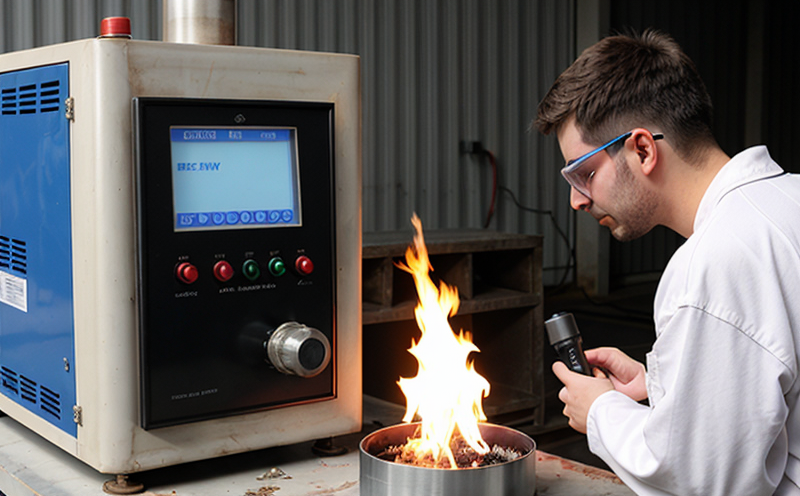DIN EN 15316 Heating System Thermal Efficiency
The DIN EN 15316 standard is a European harmonized standard that specifies the method for determining the thermal efficiency of heating systems. This standard is particularly relevant in the HVAC sector, where understanding and optimizing heat transfer is critical for energy-efficient design and operation.
Thermal efficiency is defined as the ratio between the useful output of the system (in this case, heat delivered to a building) and the total input energy required by the heating system. DIN EN 15316 provides a methodology to measure this efficiency under controlled conditions that simulate real-world operating scenarios.
The testing process involves several key steps:
- Installation of the heating system in a climate chamber or similar controlled environment.
- Calibration and validation of test equipment such as temperature sensors, flow meters, and energy meters.
- Conducting steady-state tests to ensure consistent operating conditions.
- Data acquisition during both nominal and off-nominal operation modes to capture the full range of system performance.
The results from these tests are then used to calculate the thermal efficiency according to the standard's defined formula. This allows for a standardized comparison between different heating systems, facilitating informed decision-making in terms of procurement and compliance.
Understanding the principles behind DIN EN 15316 is crucial for quality managers and R&D engineers who need to ensure that their products meet international standards. For compliance officers, this knowledge helps in verifying that suppliers are delivering equipment that adheres to regulatory requirements.
Scope and Methodology
The scope of DIN EN 15316 covers the determination of thermal efficiency for various types of heating systems used in buildings. This includes, but is not limited to, gas boilers, oil-fired boilers, condensing boilers, and heat pumps.
According to the standard, the testing should be conducted under steady-state operating conditions to minimize variations due to transient effects. The methodology involves:
- Determining the input energy by measuring electrical power consumption or fuel flow rate.
- Metering the heat output using calorimetric methods or temperature-based measurement techniques.
- Calculating the thermal efficiency using the formula: Efficiency = (Heat Output / Input Energy) x 100.
The standard also provides guidelines for ensuring accurate and reproducible results, including recommendations on equipment calibration and environmental conditions. These detailed procedures are designed to provide a consistent basis for comparing different heating systems across various manufacturers and regions.
Compliance with DIN EN 15316 is essential for HVAC manufacturers aiming to ensure their products perform efficiently under real-world conditions. By adhering to this standard, companies can demonstrate that their heating systems meet the highest international quality standards, thereby enhancing customer confidence and satisfaction.
Customer Impact and Satisfaction
The implementation of DIN EN 15316 has several positive impacts on customers. Firstly, it ensures that heating systems are highly efficient, which translates directly into lower energy bills for end-users. This cost savings is especially significant in commercial settings where large-scale HVAC systems are common.
- Increased customer satisfaction is achieved through reliable and consistent performance of the heating system.
- Environmental benefits include reduced carbon footprints due to decreased reliance on fossil fuels.
For procurement departments, compliance with this standard can reduce risks associated with purchasing non-compliant equipment. It also provides peace of mind knowing that all systems meet stringent international standards.
R&D teams benefit from having a clear benchmark against which they can assess new technologies and innovations. This facilitates continuous improvement in product design and development.
International Acceptance and Recognition
DIN EN 15316 is widely recognized across Europe and beyond due to its comprehensive approach to measuring heating system thermal efficiency. It has been adopted by many countries as a national standard, reflecting the global importance of energy-efficient heating systems.
- Many HVAC manufacturers use DIN EN 15316 as part of their quality assurance processes, ensuring that all products meet stringent international standards.
- The standard is also accepted in various regulatory frameworks, making it easier for companies to comply with local requirements.
This widespread acceptance enhances the global competitiveness of European HVAC equipment manufacturers. It allows them to export their products confidently, knowing they conform to internationally recognized standards.
Furthermore, compliance with DIN EN 15316 provides a strong foundation for meeting additional environmental and sustainability goals set by governments and organizations worldwide.





